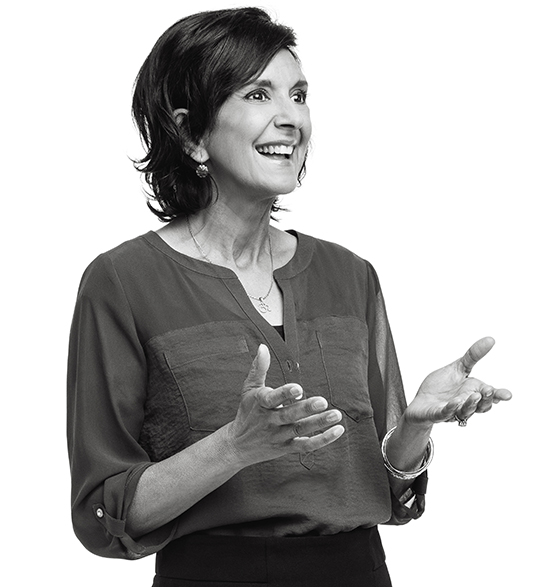Trust: The Critical Driver of Agility
8th November 2023
- 6 min read

People are the irreplaceable catalysts for team success, culture, and results…but they’re worn out. Employee willingness to support or adapt to organisational changes (which are in no short supply) dropped from 74% in 2016 to 38% in 2022. As external pressures and internal drivers for more innovation are here to stay, what will propel your people further, faster, together- no matter the challenge?
Trust isn’t just a desirable attribute in an agile organisation- it’s a prerequisite. Read on to explore the need for agility today, five roles trust plays in achieving it and how high trust behaviours transform the most critical role of all- leadership.
What Do Agile Organisations Do Differently?
From transactional, industrial-era organisations to interdependent, networked ecosystems, the way we approach work is evolving. Today we depend on each other, not just ourselves, to get work done, necessitating integration across the entire value chain. Agile organisations are akin to living organisms that grow, learn, and adapt in a world where inter departmental collaboration and dynamic problem solving has never been more important.
In a nutshell, the Agile Manifesto establishes a focus on prioritising people and relationships over methods and tools, valuing a functioning product over extensive documentation and embracing adaptability to achieve goals rather than strict adherence to plans.
The result is self-organising teams within broad control parameters, focusing on transparency and continuous improvement rather than predictability and efficiency.
However, genius innovations fall apart without the buy-in of people who are inspired see the bigger picture, feel safe to act quickly and actually enjoy working together. None of this is possible without trust.
The Agility Cost of Low Trust
Agile organisations are intentional about building trust into every layer of the business, countering the cost of low trust which so many individuals and teams are not trained to see.
Organisations with the highest level of trust have 360% more revenue growth. Why? Because like the grease behind a well-oiled machine, when trust flows freely so does communication, collaboration and innovation. Speed between people and towards deliverables goes up, and cost- whether social, emotional or financial- goes down. However, when there is a deficit of trust, disjointed, inefficient and obstructive interactions become the bedrock of an organisation. Who feels able to go outside their comfort zone or try something new in those conditions?
Five roles trust plays in agile organisations
To demonstrate the point, we have broken down the role trust plays in the main obstacles to agile working:
Reducing Resistance to Change
Agility depends on being able to pivot away from and seek opportunities outside the status quo, but change is often met with resistance. Managing this human reaction requires trust to flow up, down and side to side. Only when people trust in the credibility of the big picture, are included in the decision-making process and feel valued as a whole person with unique circumstances, will the buy into the agile methodology and adopt the Agile mindset.
Breaking Down Siloed and Hierarchical Structures
Traditional hierarchical structures, with rigid roles and departmental boundaries, hinder agility. Siloed teams and lack of cross-functional collaboration can lead to slower decision-making, limited knowledge sharing, and a lack of flexibility. Organisations which overcome this are those which encourage an abundance mindset of “there is enough for everyone”; enough credit, enough resources, enough opportunity to contribute. When people trust in themselves and others that way, cross-functional collaboration thrives.
Increasing Psychological Safety
Promoting a culture of experimentation is critical to agility, but it doesn’t thrive if people don’t feel safe to make mistakes or have the self-belief that comes from being backed by leadership. Building trust is essential for creating a psychologically safe environment where individuals are comfortable expressing their opinions, taking risks and collaborating openly. Psychological safety is particularly key to avoiding groupthink, a common phenomenon which favours consensus over critical reasoning or challenging ideas.
Overcoming Inflexible Processes and Bureaucracy
One of the biggest and most pervasive barriers to agility and innovation is bureaucracy; the need for exhaustive documentation and paper trails. This happens when low trust leads to second-guessing, double checking, and bottlenecks. Organisations can have all the best streamlining intentions, but they won’t stick if teams are constantly tripped up by a distrust in each other’s ability or commitment.
Creating Alignment and Clarity
When there is a lack of alignment and clarity in goals, priorities, and expectations, breakthrough results wither away. If teams or individuals have conflicting objectives or are unclear about their roles and responsibilities they lose the confidence to course correct, leading to inefficiencies and delays. Transparency, mutually agreed expectations and collaboration around resources are critical to driving consistent results through constant uncertainty.
Agile Leaders are High-Trust Leaders
When the nature of the world, work, the workplace, the workforce, and choice are all changing so rapidly, the nature of leadership needs to change with it. The era of top-down directives is waning, and open interactive conversations are coming to the fore- and yet old habits and philosophies die hard. According to our research, 90% of leaders today are still operating with some level of ‘Command & Control’ style leadership.
Agility depends on the discretionary energy of your people, but this is so often diminished rather than unleashed because many leaders do not know how to achieve what Stephen M.R Covey, FranklinCovey Global Thought Leader and best-selling author of The Speed of Trust, describes:
“In times of change, crisis, and uncertainty, the greatest asset and security any leader has is their credibility. The greatest currency they have is the trust people have in them. The greatest power they have lies in how they choose to extend trust to others.”
If you don’t have credibility, your communication loses all impact. Instead of focusing on working together overcome obstacles, your team members will waste their time anxiously second guessing what they’re told or being suspicious of your motives.
If you don’t relinquish control, especially when uncertainty is telling you to instinctively tighten it, and extend trust first, you’ll breed resentment not confidence. A Slack survey of 10,000 workers found that employees who feel trusted are 1.3x more likely to say they’ll go “above and beyond”.
Times of crisis are primed for losing trust, but when leaders are intentional about adopting and cultivating high-trust behaviours, change becomes an opportunity for greater collaboration and innovation.
Build Trust, Harness Agile Working
Trust is not just a desirable attribute in an agile organisation – it is a non-negotiable prerequisite. It is the axis around which high-performing teams revolve. It’s that silent yet robust tether that connects people, breaks down silos, and engenders a shared sense of purpose.
The more we can trust one another, the fewer rules, and restrictions we need. Those closest to the work can divert their focus firmly on delivering results, safe in the knowledge they’re trusted to empowered to pivot, ideate, innovate, and seek help when necessary.
At FranklinCovey we have established frameworks for helping organisations unleash the unique contribution every person has to offer and build a high-trust environment where employees work together in more productive and creative ways. Learn more about how we partner with you to achieve this behaviour change and increase your impact in an ever-changing landscape.





